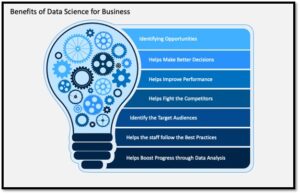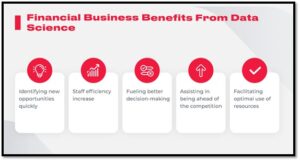
Introduction to the Evolution of Data Science
Data Science has emerged as a powerhouse, transforming the way we understand and leverage data. Initially rooted in statistics and computer science, its evolution traces back to the early days of data analysis. As technology advanced, the exponential growth of data prompted the need for more sophisticated methods, giving rise to the interdisciplinary field we now know as Data Science. From traditional statistical models to the integration of machine learning and artificial intelligence, Data Science has evolved to decipher complex patterns, extract valuable insights, and make informed predictions. The increasing reliance on big data and cloud computing has further propelled this evolution, providing the infrastructure needed for handling massive data sets with efficiency.
Today, Data Science plays a pivotal role across industries, influencing decision-making processes, optimizing operations, and fueling innovations. As we stand on the cusp of the future, the evolution of Data Science and Microsoft Power BI development services, a critical part of it continues, promising new dimensions of discovery and impact in the world of information and analytics.
Data Science’s Journey in the Financial Sector
The journey of Data Science in the financial sector has been transformative, reshaping the way that operate and make decisions. Initially confined to basic data analysis it has evolved into a sophisticated powerhouse that fuels innovation and enhances various aspects of financial operations.

In the early stages, financial sectors primarily used data for transactional record-keeping. However, as technology advanced, Data Science emerged as a critical player in risk management. Predictive analytics models now analyze historical data to identify patterns, enabling proactive measures against potential risks and fraud.
Key Points to consider
Additionally, credit scoring and lending decisions have become more accurate with Data Science analyzing vast datasets to determine creditworthiness.
The Role of Data Science in Financial Growth
Data Science helps in financial growth by turning data into actionable insights. It guides smart decisions, helps manage risks, and improves customer experiences. Through predictive analytics, it aids in wise investments and tailors services for customer satisfaction. Data Science swiftly spots and prevents financial threats. By automating compliance it ensures adherence to rules. In essence, Data Science is the key to innovation and efficiency, propelling financial institutions toward robust and sustainable growth.
Challenges in Financial Data Management: A Contemporary Overview
Managing financial data comes with its share of challenges. Firstly, the volume of data can be overwhelming requiring robust systems to handle and organize it efficiently. Security is a top concern because financial data is a prime target for cyber threats, demanding strong measures to keep it safe and comply with regulations.
Connecting different systems within financial institutions can be tricky, causing invulnerability issues. Ensuring the accuracy of data is an ongoing battle, as discrepancies can impact decision-making and risk assessment. Real-time processing is another challenge, especially in the fast-paced financial world. Striking a balance between providing access to data and protecting privacy adds complexity to the mix. In essence, managing financial data requires addressing these challenges with advanced technologies, strict security measures, and adaptable strategies to ensure accuracy, compliance, and resilience in the face of evolving threats.

The Emergence of Power BI: Revolutionizing Data Analytics in Finance
The emergence of Power BI has revolutionized how financial data is harnessed for insights and the transformative impact of Power BI, shedding light on its role in reshaping data analytics within the finance sector.
Seamless Integration with Financial Data Sources: Power BI in Action
Power BI’s integration with financial data sources is like fitting puzzle pieces together for a clear picture. It effortlessly connects to various financial data streams from transactions to market trends acting as a digital translator. This seamless integration means no more scattered data everything is neatly organized and easily understandable.
Power BI simplifies the complex task of bringing together diverse financial information, allowing professionals to make informed decisions with confidence. It’s the key to unlocking a unified view of financial data, making the journey from raw numbers to actionable insights smooth and accessible for everyone.
Data Visualization and Decision-Making: Power BI’s Impact on Financial Insights
Power BI works like a superhero for financial professionals, turning boring numbers into exciting pictures.
Predictive Analytics and Forecasting: Power BI’s Contribution to Financial Innovation
Power BI acts as a visionary, enabling financial professionals to future trends and anticipate market shifts. This is transformative empowering businesses to make strategic decisions with confidence. Through interactive dashboards and dynamic reports, Power BI ensures that predictive analytics remains a real-time endeavor. Continuous updates based on evolving data guarantee the accuracy of forecasts guiding enterprises through the ever-changing landscape of finance. Power BI ensures that forecasts stay accurate, guiding businesses through the dynamic landscape of finance. It’s not just about numbers; it’s about foreseeing the future and staying ahead in the game.
Operational Efficiency: Streamlining Financial Processes with Power BI
Just as the impact of Microsoft PowerApps development on the low code development sphere, Power BI’s influence on the Financial business cannot be overstated. It has emerged as a catalyst, impeccably reshaping the financial landscape by improved operational efficiency.
Just as how Microsoft PowerApps development revolutionized the low code development sphere, Power BI emerged as a catalyst for operational efficiency, reshaping the financial landscape with its transformative capabilities.
Unified Data Integration: Power BI harmonizes diverse financial data sources, creating a unique and accessible view. This eradicates data silos, ensuring that information flows seamlessly across the organization.
Visual Intelligence: The platform’s visual prowess turns complex financial data into intuitive charts and graphs. Financial professionals gain instant insights, accelerating decision making by simplifying the interpretation of information.
Real-Time Agility: One of Power BI’s standout features is its real-time analytics. Financial professionals can monitor market changes, transactions, and key metrics instantly, enabling swift responses to dynamic economic conditions.
Collaborative: Shared dashboards and collaborative features in Power BI foster a culture of teamwork. Financial teams can work cohesively, accessing shared reports that align efforts and ensure everyone is on the same page.
Customized Reporting for Financial Stakeholders: Power BI’s Tailored Solutions
With its intuitive design, Power BI allows financial professionals to create customized reports that resonate with stakeholders. Whether it’s investors, executives, or team members, Power BI enables the presentation of data in a visually compelling manner, making complex financial information easily digestible. Power BI’s flexibility empowers users to adapt reports incorporating real-time data and adjusting visuals to reflect the most current financial landscape. This adaptability ensures that stakeholders are always equipped with the latest insights enhancing decision-making accuracy.
Power BI’s customized reporting goes beyond traditional data presentation. It transforms financial information into a strategic asset, providing stakeholders with precisely what they need to make informed decisions and drive financial success.
Conclusion:
In conclusion, the evolution of data science has significantly shaped the financial sector, with data-driven insights playing a pivotal role in fostering growth. Despite the challenges in financial data management, the emergence of tools like Power BI has revolutionized analytics, enabling seamless integration, predictive analytics, and tailored reporting. The journey from data visualization to operational efficiency showcases the transformative power of these technologies in streamlining financial processes.
Author Bio: Kapil Panchal – Technical Content Manager
Hi, I am Kapil, a passionate Technical writer and an SEO freak working as a Technical content manager at iFour Technolab – a leading Microsoft Entra ID Consulting Services company in USA. With extensive experience in the IT, Services, and Product sectors, I relish writing about technology and love sharing exceptional insights on various platforms. I believe in constant learning and am passionate about being better every day.
Image

LinkedIn: https://www.linkedin.com/in/kapil-panchal-99122816a/